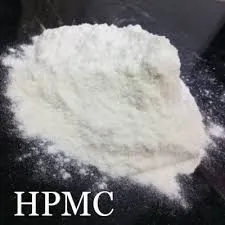
Nov . 22, 2024 00:09 Back to list
hydroxyethyl cellulose for paint
Hydroxyethyl Cellulose for Paint A Versatile Additive for Enhanced Performance
Hydroxyethyl cellulose (HEC) is a non-ionic, water-soluble polymer derived from cellulose, a naturally occurring polymer found in plant cell walls. Its unique properties make it an essential additive in various applications, particularly in the paint industry. This article explores the characteristics, benefits, and applications of hydroxyethyl cellulose in paints, emphasizing its versatility and functionality.
Characteristics of Hydroxyethyl Cellulose
HEC is synthesized by the etherification of cellulose with ethylene oxide, which introduces hydroxyethyl groups into the cellulose structure. This modification imparts water solubility and thickening properties, setting HEC apart from other cellulose derivatives. The molecular weight of HEC can vary widely, influencing its solubility and viscosity, which allows manufacturers to tailor its properties to specific applications. HEC is generally low in toxicity and has no significant odor, making it suitable for use in water-based paints and coatings.
Benefits in Paint Formulations
1. Thickening Agent One of the primary functions of HEC in paint formulations is to act as a thickening agent. Its ability to increase the viscosity of the paint helps in achieving optimal application characteristics. HEC ensures that the paint maintains a uniform consistency, preventing separation and settling of pigments and fillers. This property is crucial for both the storage and application of paint, allowing for a smooth and even coating on surfaces.
2. Improved Control of Rheology Hydroxyethyl cellulose enhances the rheological properties of paint, allowing for better control over flow and leveling characteristics. This control helps prevent dripping and running during application, providing painters with a user-friendly experience. Moreover, the thixotropic behavior of HEC means that viscosity decreases under shear stress, allowing for easy application with brushes, rollers, or sprayers, while recovering its initial viscosity at rest.
3. Suspension Stability HEC contributes to excellent suspension stability, ensuring that pigment particles remain evenly distributed throughout the paint. This stability prevents sedimentation and delivers consistent color and finish quality. Enhanced suspension characteristics are particularly vital for paints with large pigment loads, as they help maintain the aesthetic appeal and functionality of the final product.
hydroxyethyl cellulose for paint

4. Water Retention Another significant advantage of HEC is its ability to retain water within the paint formulation. This property is particularly beneficial in water-based paints, as it prevents the paint from drying too quickly during application. Sufficient wet edge time ensures that the paint can spread uniformly and bond well to the substrate, leading to a smooth and durable finish.
5. Compatibility with Other Additives HEC exhibits excellent compatibility with various other additives used in paint formulations, such as preservatives, surfactants, and antifoaming agents. This compatibility allows formulators to create complex systems that optimize both performance and cost-effectiveness, further enhancing the overall quality of the paint.
Applications in the Paint Industry
Hydroxyethyl cellulose is widely used in the formulation of various types of paints, including architectural coatings, industrial coatings, and specialty paints. Its versatility extends to various substrates such as wood, metal, and masonry. HEC is commonly found in water-based latex paints, where it contributes to the formulation's performance without compromising environmental standards.
Furthermore, as sustainability and eco-friendliness become increasingly important in the paint industry, HEC offers a viable solution. Being derived from cellulose, a renewable resource, HEC helps formulators develop water-based, environmentally friendly paints that align with green building standards and regulatory requirements.
Conclusion
In conclusion, hydroxyethyl cellulose is a vital additive in the paint industry, providing numerous benefits that enhance the performance of coatings. Its thickening properties, rheology control, water retention capabilities, and compatibility with other additives make HEC a preferred choice for formulators. As the industry continues to evolve toward sustainability, hydroxyethyl cellulose stands out as a valuable component in the creation of high-quality, environmentally friendly paints that meet the demands of modern consumers.
-
Versatile Hpmc Uses in Different Industries
NewsJun.19,2025
-
Redispersible Powder's Role in Enhancing Durability of Construction Products
NewsJun.19,2025
-
Hydroxyethyl Cellulose Applications Driving Green Industrial Processes
NewsJun.19,2025
-
Exploring Different Redispersible Polymer Powder
NewsJun.19,2025
-
Choosing the Right Mortar Bonding Agent
NewsJun.19,2025
-
Applications and Significance of China Hpmc in Modern Industries
NewsJun.19,2025







